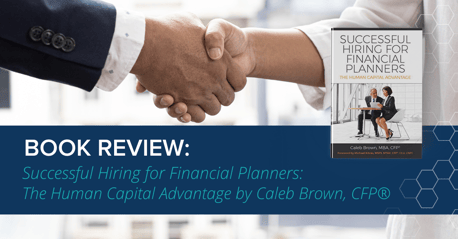Blog
Select Topic:
Posted by FP Transitions on February 21, 2024
The Rolling 5-Year Plan: Solving Succession Challenges
One of the best things about financial advisors and wealth management professionals – you love your job. You enjoy the puzzle and the prospecting. You enjoy the paycheck. And you enjoy your clients. We know this because we know you. This is what you...
Posted by FP Transitions on December 4, 2023
Building the Right Team to Support Your Business Priorities
One of the most difficult challenges for independent advisory businesses is finding and retaining the professionals they need to service a growing client base and perpetuate sustainability. The talent pool is extremely competitive, especially in the...
Posted by FP Transitions on November 1, 2023
The Three Pillars of a Successful Advisory Business
In my work in years past, I became a professional traveler. I spent a lot of time in airports, and I got to talk to many of the pilots. Airline pilots are adventurous souls who enjoy finding ways to go faster, fly higher, and see things from a...
Posted by FP Transitions on September 6, 2023
Top 10 Drivers of Business Value
The value of your practice is determined by many factors, some obvious, and some not so obvious. And the degree to which some aspects impact your value more largely depends on the reason you’re valuing the business in the first place.
Whether...
Posted by FP Transitions on August 4, 2023
10 Reasons to Value and Monitor Your Practice
Experienced business owners recognize the importance of tracking and monitoring their firm's value over time. They know this business is one of their largest assets, and by measuring and monitoring it, they are enabling its growth, protecting its...
Posted by FP Transitions on July 24, 2023
Lending for Successors: What Advisors Need to Know
If you are preparing to become the successor of an RIA firm, you may have a lot of questions and concerns about how to negotiate the best deal and what lending options are available to help you finance the succession.
To help you answer these...
Posted by FP Transitions on July 3, 2023
Continuity is Not Succession
Often used interchangeably, the terms Continuity Plan and Succession Plan refer to very different business planning elements. Continuity plays an essential role in defining what happens upon a “triggering event”– sudden absence, disability, death...
Posted by FP Transitions on June 20, 2023
Defining Your Enterprise: What Are You Building?
For our clients, the courses of action may differ, but growth is the number one priority. The goal could be to grow and then sell it to a third party for maximum value. Alternatively, the aim could be to create a sustainable enterprise capable of...
Posted by FP Transitions on June 15, 2023
Ideas Without Action? You’re Not Alone.
Great opportunity comes often with great risk. But just as importantly, and far more prevalently, everyday challenges wear on us, too. How many times have you had the same conversation with a client about opening that 529? Or upping that 401k...
Posted by FP Transitions on February 1, 2023
Your Catalyst for Growth and Progress: Focus on Your Team
Editor’s Note: We originally posted this article by Colleen Jordan Hallinan in 2018. Since then, the need for business owners to focus on building the right team in order to grow and establish sustainability has only increased. And so, five years...
Posted by FP Transitions on September 23, 2022
BOOK REVIEW: Successful Hiring for Financial Planners: The Human Capital Advantage by Caleb Brown, CFP®
Many small financial advisory firms don’t have a Human Resources Department. So when it comes time to seek out, hire, train, and...
Posted by FP Transitions on June 3, 2022
Applying Our Own Advice to Ourselves, Not Just Our Clients
"Think about those future goals."
"Hold steady and don't react to the market."
"Remember, we have a plan and it's still well on track."
Throughout the market roller coaster of the Pandemic and now with 2022 rearing its head, advisors are getting...



/Blog%20Header%20-%20Top%2010%20Drivers%20of%20Business%20Value%20(1).png?width=458&height=280&name=Blog%20Header%20-%20Top%2010%20Drivers%20of%20Business%20Value%20(1).png)


/Blog%20-%20Defining%20Your%20Enterprise%20What%20are%20you%20building%20(Refresh%20Banner)%20.png?width=458&height=280&name=Blog%20-%20Defining%20Your%20Enterprise%20What%20are%20you%20building%20(Refresh%20Banner)%20.png)
.png?width=458&height=280&name=Procrast%20Blog%20(1).png)
/Blog%20-%20Catalyst%20for%20Growth.png?width=458&height=280&name=Blog%20-%20Catalyst%20for%20Growth.png)

